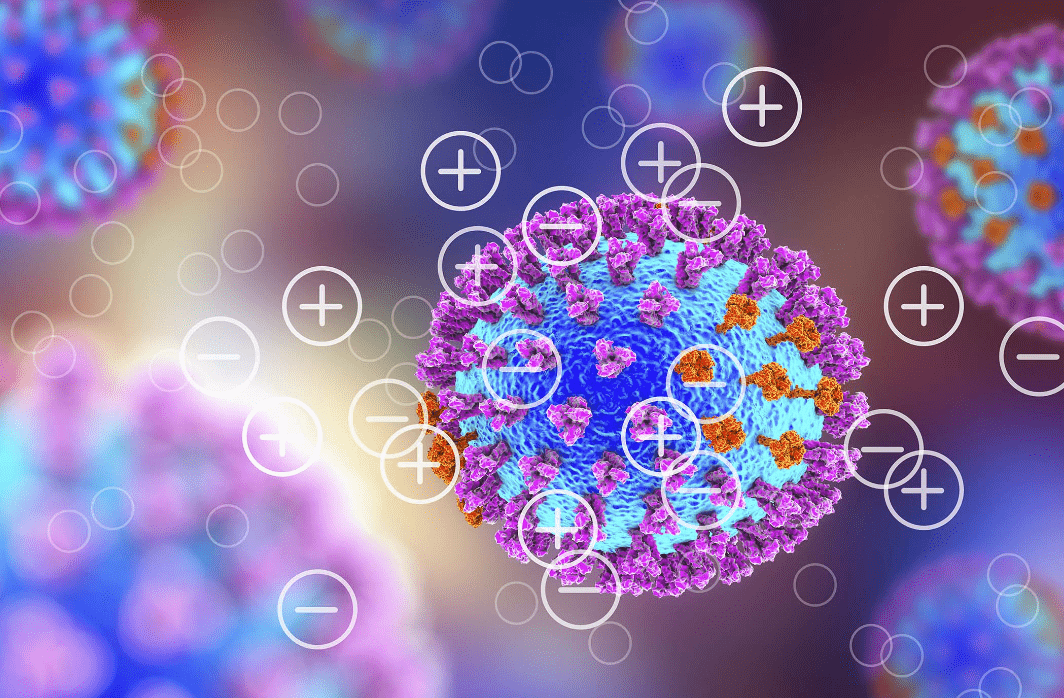Bipolar ionization is a technology used to improve indoor air quality by producing ions that can help in the purification of air. It is commonly employed in HVAC (heating, ventilation, and air conditioning) systems in buildings such as offices, schools, and residential spaces. The technology works by generating positive and negative ions that are released into the air.

(Source:allenshariff)
Bipolar ionization, an indoor air purification technology that has gained recent prominence, has roots dating back to the 1970s. Originating in Europe, the foundational principles of bipolar ionization involve the generation of both positive and negative ions, which are then released into indoor spaces. This technology initially found applications in industrial and commercial settings, where it demonstrated its ability to reduce airborne particles and improve overall air quality. Bipolar ionization operates by causing particles to cluster, making them easier to capture through filtration systems or allowing them to settle on surfaces. Over the years, its integration with heating, ventilation, and air conditioning (HVAC) systems has contributed to its widespread adoption in various environments, from offices to healthcare institutions.
While it has a history of successful use, the technology garnered renewed attention during the COVID-19 pandemic as organizations sought effective measures to enhance indoor air quality and mitigate the airborne transmission of pathogens.
The COVID-19 pandemic has heightened awareness about the potential for airborne transmission of viruses, and as a result, there has been a renewed focus on technologies that claim to mitigate the spread of pathogens in indoor environments. Bipolar ionization, with its ability to reduce airborne particles and inactivate certain pathogens, has been positioned as one of the tools in the broader effort to enhance indoor air quality.
Bipolar ionization is a straightforward concept involving the generation of positive and negative ions. These charged particles play a key role in the purification of indoor air. By attaching to contaminants in the air, the ions cause the particles to cluster and become heavier. This clustering effect makes it easier for air filtration systems to capture and remove the contaminants. As a result, the overall air quality is improved, and the technology is particularly relevant in reducing the presence of bacteria, viruses, and other pollutants.
When considering the implementation of bipolar ionization technology for indoor air quality improvement, there are several important factors to take into account. Here are some key considerations:
Ozone emissions can be a concern with some bipolar ionization devices. It's crucial to prioritize devices that meet the UL 2998 standard certification, ensuring zero ozone emissions. Compliance with this standard aligns with EPA recommendations and supports safe indoor air quality practices.
The short lifespan of ions, lasting around 60 seconds, highlights the importance of strategically placing bipolar ionization devices for optimal effectiveness. Mounting devices in ductwork may pose challenges in delivering ions to occupied spaces promptly. Portable air purifiers offer a workaround, ensuring immediate distribution of ions in specific areas, addressing the limitation of ion lifespan.
Recognizing that different spaces (e.g., gym, cafeteria, office, bedroom) have unique requirements is key. Tailoring the choice of bipolar ionization devices, their location, and distribution methods to the specific characteristics of each space ensures optimal performance and protection.
The maintenance requirements of bipolar ionization devices vary. While some devices, such as tube-based systems, may necessitate annual replacement, others, like needlepoint bipolar ionization, offer a virtually maintenance-free experience due to self-cleaning features occurring every 3-5 days. This highlights the importance of selecting a device that aligns with long-term cost-effectiveness and ease of management.
| EddaAir DBD BPI | NeedlePoint Ionization | |
|---|---|---|
| Reduces Contaminants in the Space | Yes | No |
| Reduces Odors | Yes | No |
| Reduces VOCS | Yes | Yes |
| Reduces Particles | Yes | Yes |
| Effective on Bacteria and Virus | Yes | Yes |
| Doesn't Produce Ozone | Yes | Yes |
| Smart IoT Capable System | Yes | No |
| Low Static Pressure Drop | Yes | Yes |
| Maintenance | Every 2 Years | Every 5 Days |
| No Re-Engineering of HVAC System Required | Yes | Yes |
| New Design and Retrofit | Yes | Yes |
| Reduces Energy Costs | Yes | Yes |
| No Chemicals or Byproducts | Yes | Yes |
| Tested Contaminant Reductions in Occupied Space | Yes | No |
EddaAir DBD BPI stands out as a cutting-edge solution for indoor air quality enhancement, offering a myriad of advantages. This innovative technology effectively reduces contaminants, eliminates odors, and diminishes Volatile Organic Compounds (VOCs) and particles in the air. With proven efficacy against bacteria and viruses, it ensures a safer and healthier indoor environment. Notably, EddaAir DBD BPI operates without producing ozone, features Smart IoT capabilities, and maintains a low static pressure drop, contributing to both safety and energy efficiency. Its minimal maintenance requirements, versatility in design applications, and successful performance in occupied spaces make it a standout choice for those seeking a comprehensive and sustainable solution for superior indoor air quality.